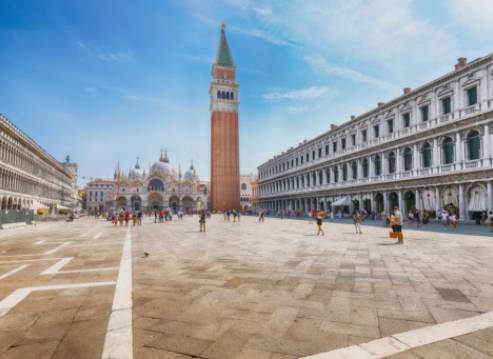Step into the enchanting world of the Venetian Carnival, where masks hold a special significance and play a pivotal role in the festivities. From the iconic Bauta mask to the mysterious Moretta mask, each character and figure at the carnival carries with it a rich history and symbolism that adds to the allure of this centuries-old tradition. Explore the allure of these masks and uncover the hidden meanings behind them as we delve into the fascinating world of the Venetian Carnival.

The Intriguing Role of the Bauta Mask in Venetian Carnival
The Bauta mask is one of the most iconic symbols of the Venetian Carnival. It is a simple, white mask that covers the entire face, with wide eyeholes and a prominent chin. The Bauta mask has a long history and was traditionally worn by both men and women during the carnival festivities.
One of the most intriguing aspects of the Bauta mask is its ability to conceal the wearer's identity completely. This allowed people from all walks of life to participate in the carnival without fear of judgment or repercussion. The anonymity provided by the Bauta mask enabled individuals to let loose and indulge in forbidden behaviors, such as flirting, gambling, and even political activism.
In addition to its role in providing anonymity, the Bauta mask also served as a symbol of social equality. During the Venetian Carnival, people from different social classes would come together and mingle as equals, united by their shared desire to revel in the festivities. The Bauta mask leveled the playing field, allowing everyone to partake in the joy and revelry of the carnival without regard to their status or background.
Furthermore, the Bauta mask has a deep-rooted cultural significance in Venetian society. It is often associated with the Commedia dell'arte, a form of Italian theater characterized by masked performances and improvisation. The Bauta mask was a popular choice for actors and performers, who would use it to embody larger-than-life characters and entertain audiences with their antics.
Overall, the Bauta mask played a crucial role in the Venetian Carnival, serving as a symbol of anonymity, social equality, and cultural heritage. Its timeless appeal and mysterious allure continue to captivate visitors and locals alike, making it a beloved icon of Venetian tradition.
The Symbolism Behind the Moretta Mask in Venetian Culture
The Moretta mask, also known as the Servetta Muta or the Mute Maiden, is a traditional Venetian mask that holds deep symbolism within Venetian culture. This mask is unique in that it covers the entire face and is held in place by a button that the wearer clenches between their teeth, rendering them mute while wearing the mask.
The symbolism behind the Moretta mask goes beyond just its function of muting the wearer. It is said that the mask was originally worn by women of the nobility who wanted to protect their identities while attending secret events or liaisons. By remaining silent while wearing the mask, it added an air of mystery and allure to the wearer, allowing them to engage in activities without being recognized or revealing their true identity.
Furthermore, the Moretta mask is often associated with the concept of female empowerment and independence. The mask was traditionally worn by women who wanted to assert their autonomy and break free from the constraints placed upon them by society. By donning the Moretta mask, women were able to take control of their own narratives and defy societal expectations, symbolizing their strength and resilience.
Overall, the Moretta mask holds a significant place in Venetian culture, representing not only anonymity and mystery but also empowerment and freedom for those who wear it. Its unique design and history make it a distinctive and powerful symbol within the Venetian Carnival.
The Mysterious Veil of the Columbina Mask at the Venetian Carnival
The Columbina mask is one of the most mysterious and intriguing masks at the Venetian Carnival. This mask is known for its delicate and elegant design, typically featuring a small, beak-like protrusion over the nose. The Columbina mask is often worn by women, and it is said to symbolize beauty, grace, and charm.
The history of the Columbina mask dates back to the Commedia dell'arte, a form of Italian theatre that was popular in the 16th century. In this theatrical tradition, performers would wear masks to represent different characters, with the Columbina mask often being worn by the female lead. The mask allowed actors to adopt different personas and play a variety of roles, adding to the intrigue and mystery of the performance.
In Venetian culture, the Columbina mask is also associated with romance and seduction. It is said that wearing the Columbina mask allows individuals to act with more freedom and confidence, enabling them to fulfill their desires and fantasies without fear of judgment. This sense of anonymity and liberation adds to the allure of the Columbina mask at the Venetian Carnival.
Overall, the Columbina mask plays a crucial role in the Venetian Carnival, adding an element of mystery, elegance, and sensuality to the festivities. It continues to captivate and enchant spectators with its beauty and symbolism, making it a beloved and iconic feature of the Venetian Carnival.
